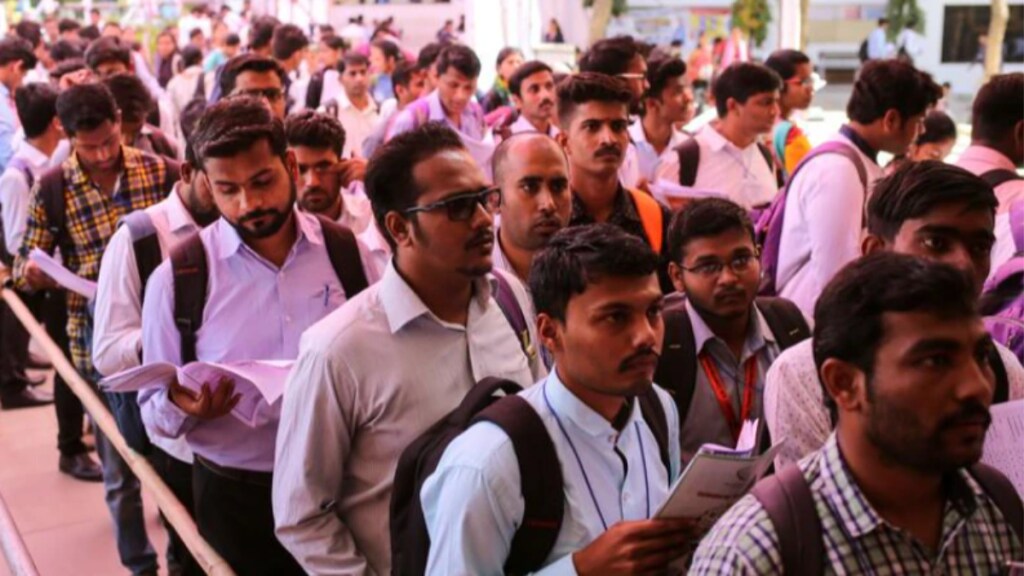By TV Mohandas Pai and Nisha Holla
Over the past decade, the NDA government has tackled two significant challenges in India. First, it has overseen the largest development surge in Independent India by providing essential amenities like housing, water, and power. Second, it has built extensive infrastructure to connect the entire country. India now has a large aspirational class, particularly the labour coming off the land; high-quality job creation is the next crucial socio-political challenge, particularly in the heartlands.
India is the fastest-growing large economy. Nominal GDP expanded from ₹113.5 trillion in FY14 to ₹295.4 trillion in FY24, achieving a robust 10% CAGR and a ten-year cumulative growth of 160%. This economic growth has been accompanied by a steady rise in formal employment, as evidenced by extensive data from the Employee Provident Fund (EPF) and Employee State Insurance (ESI) systems. These databases are reliable as they record new subscribers linked to Aadhar only after actual payments are received in the fund.
Encouraging employment generation in India
After a dip in subscribers during the pandemic years of FY20 and FY21, both EPF and ESI subscriptions have surged. EPF saw 1.22 crore new subscribers in FY22, 1.38 crore in FY23, and estimates for FY24 suggest 1.31 crore new subscribers. From September 2017 to April 2024, EPF recorded a significant total of 7.85 crore new jobs. Similarly, ESI recorded 1.49 crore new subscribers in FY22, 1.67 crore in FY23, and 1.67 crore in FY24. From September 2017 to April 2024, ESI documented a total of 8.3 crore new jobs. However, there is considerable overlap of subscribers between the two databases.
Despite some media claims of jobless growth, EPF and ESI data—which are based on actual contributions rather than surveys—indicate an encouraging trend in employment generation. Assertions that these figures merely reflect job formalization are not supported by two key facts. First, these databases also track data from establishments submitting their first remittance within a fiscal year, indicating existing employees being formalized. For instance, in FY24, 56,023 establishments submitted their first cheque to EPF, formalizing 11.2 lakh jobs. This suggests that 1.19 crore (1.31 crore – 11.2 lakh) new jobs were created in FY24, excluding formalization.
Second, a significant number of new jobs are in the 18-25 age bracket, representing over 50% of new jobs annually in the EPF database and over 48% in the ESI database. It is unlikely that such a high proportion of young individuals would be accounted for if these were merely existing jobs being formalized. This points to genuine job creation.
While employment growth is reasonable, strategic investment and incentives are necessary to provide adequate employment for India’s aspiring population. The agriculture-dependent workforce has been moving to services and industry at the rate of 1%p.y. since 2000 – barring the pandemic years – and this trend is accelerating. They need robust opportunities where they can be skilled, upskilled and find suitable local employment. The other interrelated matter is the availability of jobs with adequate salaries to meet aspirations. Today, most EPF and ESI jobs pay less than INR 20,000 monthly.
The 2024 India Employment Report published by Quess-FICCI indicates that the percentage of women engaged in agriculture has increased from 57% in 2017-18 to 64.3% in 2022-23. There has also been a steep rise in women’s participation in self-employment, especially in rural areas (from 57.7% in 2017-18 to 71% in 2022-23), mainly attributed to the rise of SHGs via the DAY-NRLM mission. Women participation in the work force has increased from 23.3% to 37% during the same period. Rural women across India clearly have the aspiration to earn and support their families and require employment close to their homes to increase workforce participation.
Special Employment Zones
Budget 2024-25 offers an opportunity to expand job availability, leveraging the remarkable progress achieved through social schemes and infrastructure development over the past ten years. Initiatives such as Atma Nirbhar Bharat, Production Linked Incentive schemes, Make in India, and Skill India, alongside export-linked manufacturing plans, provide a robust foundation for a nationwide employment generation movement.
Establishing Special Employment Zones (SEZs) could be a visionary step to create five crore new jobs in India’s heartland over five years. The zones must offer a grant of ₹2,000p.m. per new employee enrolled in the first 12 months and ₹1,500p.m. for the next 12 months, in addition to bearing the employers’ cost for EPFO and ESI contributions for the first 24 months. This will mitigate training costs and lower productivity in the initial stages.
A substantial allocation in Budget 2024-25, followed by continued investments, could realize this vision. This funding would support the development of industry clusters, incentivize employers to establish factories, and promote complementary urbanization to make these clusters globally competitive. It is crucial to locate these clusters in regions with surplus labor. The scheme could identify 300 backward districts and 1,000 tier 2/3/4 towns, establishing clusters nearby and providing the necessary connectivity for workforce commuting and rapid movement of goods.
The Budget could also offer tax deductions to entities registering in these SEZs. The Kaushal scheme could be integrated for skilling and verification of salaries via EPF or ESI payments. Women, who may face commuting or relocation challenges, could find suitable local employment, significantly increasing their workforce participation. The SEZ mission will promote large-scale job creation in India’s heartland, enabling backward districts to outpace state growth and become the nation’s new growth engines.
About Authors: TV Mohandas Pai is the Chairman, 3one4 Capital and Nisha Holla is a Research Fellow, 3one4 Capital.
Disclaimer: Views expressed are personal and do not reflect the official position or policy of FinancialExpress.com Reproducing this content without permission is prohibited.

